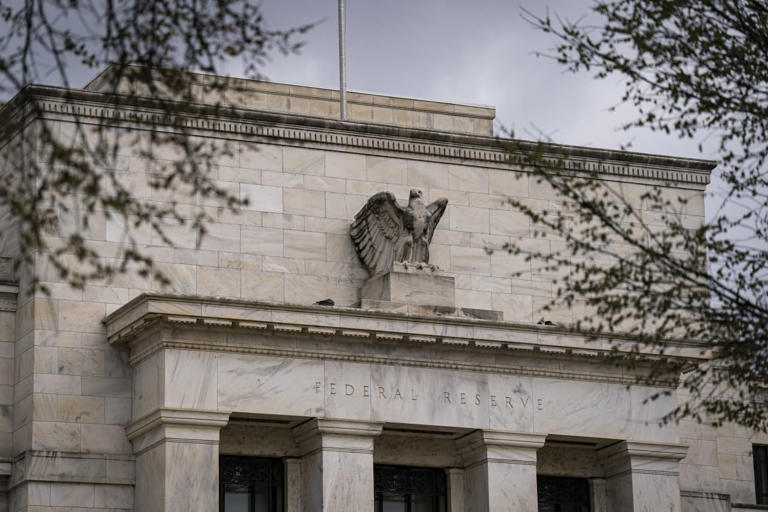The Federal Reserve is currently navigating a highly uncertain economic landscape, marked by divergent signals and potential risks that could shape its monetary policy decisions in the latter half of 2024. Rather than committing to specific forecasts, Fed officials are advocating for a scenario-driven approach, acknowledging the multitude of possible outcomes for both the U.S. labor market and inflation.
One plausible scenario on the horizon is characterized by a gradual decline in inflation alongside a resilient labor market. In this optimistic case, the Fed may opt for a measured easing of its current restrictive monetary policies. This could involve implementing a single quarter-point rate cut later in the year, aiming to achieve what economists term a “soft landing” for the economy. This scenario hinges on economic data continuing to show moderate inflationary pressures easing and the labor market maintaining strength, albeit not overheating.
Conversely, a more challenging scenario could unfold if economic growth falters more than expected, potentially leading to a rise in unemployment rates. Should this occur, the Fed might find itself compelled to consider multiple rate cuts to stimulate economic activity and stabilize job markets. This response would be aimed at countering any significant downturn in growth and employment, thereby supporting broader economic stability.
A third scenario presents a persistent challenge where inflation remains stubbornly high despite economic growth. In such a scenario, the Fed may need to maintain higher interest rates for an extended period to anchor inflation expectations and prevent prices from escalating further. Alternatively, if inflation continues to accelerate, the Fed might need to entertain the possibility of raising rates to curb inflationary pressures and maintain price stability.
Fed officials, including San Francisco Fed President Mary Daly and Governor Michelle Bowman, emphasize the importance of flexibility in responding to these uncertain economic conditions. They advocate for a proactive approach that involves assessing various potential scenarios and adjusting monetary policy accordingly. This nuanced strategy allows the Fed to remain adaptive and responsive to evolving economic data and market dynamics.
Philadelphia Fed President Patrick Harker underscores the volatility of current economic data, describing it as “choppy” in the wake of the pandemic. This volatility underscores the necessity for the Fed to maintain a data-dependent stance, ensuring that its policy decisions are grounded in real-time economic indicators rather than predetermined forecasts.
Some Fed officials, like St. Louis Fed President Alberto Musalem, caution against complacency regarding inflation risks. They highlight the possibility of inflation persisting above the Fed’s target or even accelerating, posing a threat to long-term economic stability. In such scenarios, these officials advocate for decisive monetary policy actions, such as tightening interest rates promptly, to prevent inflationary pressures from becoming entrenched.
Looking ahead to the Federal Open Market Committee’s (FOMC) upcoming meeting in September, market expectations suggest a high likelihood of at least one quarter-point rate cut. However, the final decision will depend heavily on incoming economic data, including updates on job market conditions, inflation trends, and overall economic growth.
As the Fed continues to navigate these uncertain economic waters, its approach remains focused on achieving its dual mandate of fostering maximum sustainable employment while maintaining price stability. This commitment requires a balanced and flexible approach to monetary policy, ensuring that the Fed can effectively respond to evolving economic challenges and support long-term economic prosperity.
